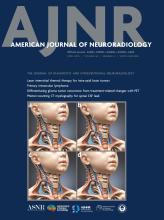This article requires a subscription to view the full text. If you have a subscription you may use the login form below to view the article. Access to this article can also be purchased.
Graphical Abstract
Abstract
BACKGROUND AND PURPOSE: Synthetic MRI (SyMRI) is a short-time acquisition sequence that generates different contrast-weighted images based on the measurement of tissue properties and provides quantitative volumetric, relaxation, and myelin maps. It has been used as an alternative to conventional MRI sequences in relapsing-remitting MS for detecting focal lesions and volumetric analysis. This study aimed to find an SyMRI variable associated with an Expanded Disability Status Scale (EDSS) ≥ 6 in progressive patients.
MATERIALS AND METHODS: Twenty-four patients with progressive MS underwent SyMRI with a 2D axial QRAPMASTER pulse sequence. We analyzed volumetric parameters, global myelin fraction (MyCF), and quantitative values derived from maps of proton density, R1, R2, and myelin for the masks: normal-appearing white and gray matter, lesion, and corpus callosum. A t test compared SyMRI variables between groups, followed by univariate binary logistic regression for significant (P < .05) or trending results (P < .09).
RESULTS: Patients were categorized into 2 groups (EDSS < 6 versus ≥ 6). Variables with significant differences between groups were: brain parenchymal fraction (P = .05), white matter fraction (P = .05), MyCF (P = .04), and corpus callosum volume (P = .04). In the binary logistic regression analysis, the best predictor of the EDSS category was MyCF, with a P value of .08, and an OR of 0.59.
CONCLUSIONS: Our results confirm differences in volumetric parameters by EDSS by using a single MRI acquisition. Additionally, higher MyCF values were associated with lower disability, highlighting SyMRI and myelin quantification as potential tools for clinical practice.
ABBREVIATIONS:
- BPF
- brain parenchymal fraction
- EDSS
- Expanded Disability Status Scale
- FDR
- false discovery rate
- GMF
- gray matter fraction
- MyCF
- global myelin fraction
- NAGM
- normal-appearing gray matter
- PD
- proton density
- SyMRI
- synthetic MRI
- WMF
- white matter fraction
- NAWM
- normal-appearing white matter
- © 2025 by American Journal of Neuroradiology













